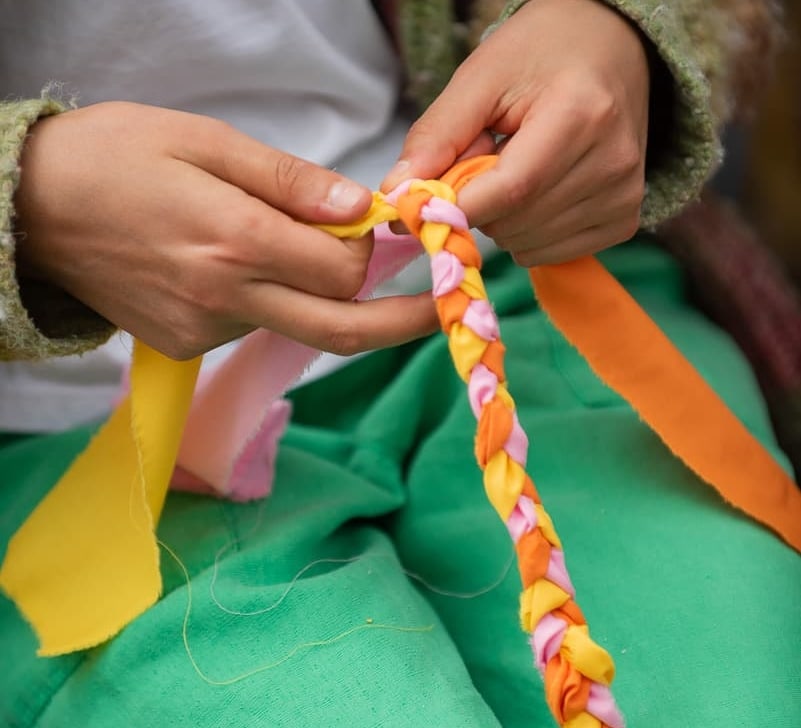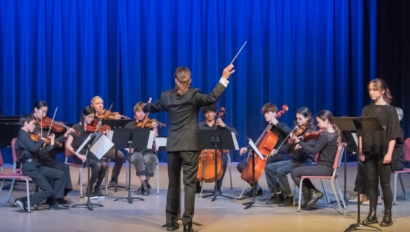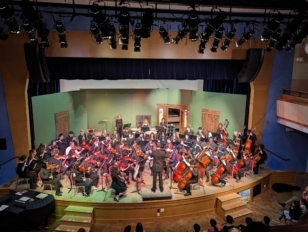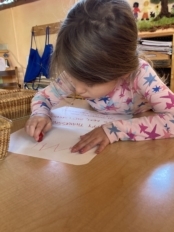Seeking what is Universally Human: A look at Relationships between Seasonal Festivals and Human Qualities

by Carol Grieder-Brandenberger – Farm Kindergarten Teacher
Seasonal festivals are deeply engrained in our human experience; they offer a way to orient
ourselves in space and time and to find a deeper meaning in life. It would be hard to imagine a
life without festivals. Throughout the world, seasonal festivals have universal roots and practices. They unite us as human beings and allow us to celebrate together, regardless of our own religious and cultural backgrounds.
This article is focussed on the northern hemisphere, but it is important to understand that every
culture carries deep roots related to its festival life. We can live with these roots in order to
discover for ourselves what the universal essence might be, no matter which hemisphere or
country we live in. The focus of the following reflections are some festivals which traditionally have been celebrated in Waldorf education. Though they may have evolved out of the Christian-European traditions, they have ancient and deeply universal roots and meaning. It is in the universality of those roots that we can discover how the qualities of each festival which we choose to celebrate might nourish human qualities which are so meaningful and essential for the child’s health and development.
Additionally, individual classes celebrate traditional festivals which have roots within our student body, either in individual classes, or as a school at large. Families often volunteer in helping to bring these special days to life, in smaller or larger gestures. Paying tribute to these festivals offers lessons for students as they navigate building a body of deeper and wider understanding and appreciation for their friends at school and for the world we live in.
In contemplating festivals, we realize that they call forth in us qualities which are essential in our human development, including courage, strength, perseverance, compassion, curiosity, joy and reverence. Recent research shows that these skills and qualities are essential human factors in determining how children manage their lives successfully, and they are a part of what Rudolf Steiner, the founder of the first Waldorf school, referred to in speaking about “healthy will forces.” In looking at the seasons and the festivals, there appears to be a correlation with human qualities or character skills which are called forth by each festival. We can also experience that the flavors differ a bit depending on the seasons, and so there is a relationship between the seasons of nature and the human qualities which are nourished through our involvement in festival life.
It is in the universality of those roots that we can discover how the qualities of each festival which we choose to celebrate might nourish human qualities which are so meaningful and essential for the child’s health and development.
It is inspiring to look at the cycle of the year and at the individual festivals which we celebrate in a Waldorf school, and to think about what the essence of each festival might be. The season of Michaelmas, for example, culminating on September 29, has to do with courage and
perseverance, and of facing the “dragons” in our lives. In ancient legends, the archangel Michael encountered and conquered a dragon. And naturally, in all of our lives we encounter “dragons,” and we are required to work with and transform them. Some of them are more visible, and are dealt with outwardly, and some require inner work and development on a very personal level.
Young children, in particular, step out into the world and away from their families every year
with much courage, as they move into new school settings. In early childhood, we celebrate this season with songs and story telling, and primarily with our active participation in the tasks of harvesting and transforming the gardens and fields in preparation for the winter months. The
repetitive tasks of community service related to harvesting and tending to fields and gardens
offers opportunities invaluable for children, who not only engage with the earth in a deeper way, through discovery of the life processes so fundamental to our sustainability, but also through their engagement and practice of courage and perseverance on an every day basis.
As autumn progresses, the leaves fall, and the days grow darker, and on November 11 we
celebrate the season of Martinmas. In an ancient legend, a beggar was helped by a former soldier named Martin, who shared his coat by cutting it in half, thus sharing the warmth he had with the person in need. By paying attention to this legend, we are honoring qualities that come from deep sharing, the sharing which can emerge out of empathy and compassion. Perhaps it is the celebration of the gesture of giving when there is no expectation that there will be a gift in return. This gesture can also be called a “random act of kindness.” The ability to give and do for others is also related to character skills which stand in relationship to the darkening nights and to inner development, and have to do with reverence, empathy and gratitude.
Being able to share is an interesting skills. It requires us to give but also to keep, it requires
balance between giving and taking, of developing and then passing onto others who are in need. In early childhood and beyond, this festival is celebrated with a joyful and reverential lantern walk through the evening.
The ability to give and do for others is also related to character skills which stand in relationship to the darkening nights and to inner development, and have to do with reverence, empathy and gratitude.
In December, the festival of the Spiral of Lights is celebrated. And naturally there also is an
interesting historical context for this festival. According to oral tradition, the spiral of lights
originated a few centuries ago among a group of Bavarian farmers, who brought moss and fern to a table that was then lit up by candles set in apples. This symbolism was rekindled in an early Waldorf community, which was serving children with special needs, and then spread throughout the world, as a festival of lights. The symbolism of the spiral is the spiral of life, and a deepening recognition of the mineral, plant, and animal world and the flame symbolizing the human spirit.
The children’s experience of the spiral can also be understood as a recollection of their own
birth, which in each case brings a light into the world. As we watch the children, we can
understand the sense of purpose, as they follow the spiraling path inward, to light their candle,
and then carry it outward to shine into the world, making our world ever brighter. It is a deeply
reverential festival, and requires the inner strength of reverence and inner attention, as well as the impulse control to hold this attention for a prolonged time. In contemplating what it might mean to live a life void of reverence, it seems that it would be immensely important to weave returning moments and festivals of reverence into the lives of children throughout their childhood, so they can carry the quality and character skill of reverence into their adult lives as well.
In the springtime festivals, we joyfully celebrate Valentine’s day, the celebration of giving and
friendship, and the springtime festival of growth and transformation which falls around Passover and Easter. During these times we are inspired to look out into the world and take part in its growth and transformation, through celebrating life. It calls on our ability to experience joyful and persevering participation in preparing the gardens, planting and tending to seedlings, and calls forth facing our inner barriers and transforming them so life can emerge.
This spring time tide of festival life culminates around the time of the summer solstice, with the
festival of Saint John, often celebrated with a bonfire and dancing, generally after the school year has ended, in a ceremony of life and joy. Easter and the festival of Saint John also date way back, with Christian as well as universal roots, and deep symbolism related to fertility and growth.
In the farm kindergarten, we were offered an incubator, which allowed the children to observe the cycle of eggs hatching, and to be involved with the care of the baby chicks. Additionally, we
were able to observe some of our chickens nesting and raising their baby chicks: an ultimate
joyful celebration of life! As we think about festival life for young children, we realize how meaningful festivals are. It has been said that we never step into the same river twice. Festivals will in essence never be the same, because with each year, both children and adults have changed. So the spiral of life leads us through the same festivals every year, but in a different space and time. To return to the table with reverence and joy and celebrate together, again and again, brings life to these human qualities which we are seeking, for our families, our communities, and ourselves.
References:
Foster, Nancy, editor (2010). The Seasonal Festivals in Early Childhood: Seeking the Universally Human (The Gateways Series Seven): WECAN Books.
Kaufmann, Scott Barry (2013). Ungifted – Intelligence redefined. The truth about talent, practice, creativity and the many paths to greatness.
Steiner, Rudolf (1924). The kingdom of childhood: Seven lectures and answers to questions.
Anthroposophic Press.
Tough, Paul (2012). How Children Succeed: Grit, Curiosity, and the Hidden Power of Character. Houghton Mifflin Harcourt.


